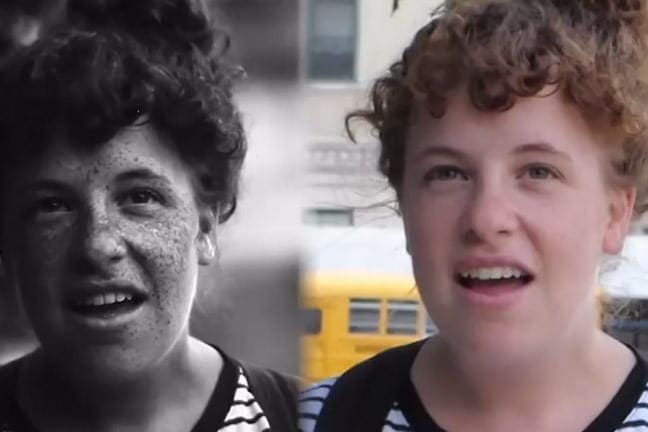 |
Want to see something freaky? Watch the video below, by artist Thomas Leveritt, that reveals sun damage on skin that is invisible to the naked eye. Even people with great-looking skin have some craziness happening under the surface.
Using a photographic process similar to what dermatologists employ to assess the health of your skin, Leveritt showed passers-by what their faces look like through a filter that only allows UV light to pass through. What they saw in the video screen was the amount of UV light reflected off their faces (reflected UV looks lighter, lack of reflection looks darker). Melanin, the pigment that gives skin its color, absorbs UV light. So where there’s more melanin, it looks like patches of blackness. Freckles, for instance, are concentrated spots of melanin. They absorb UV, which makes them worse. That’s why your freckles tend to get darker in the summer. But what you see in Leveritt’s video aren’t regular old freckles; they’re splotches of hyperpigmentation under the surface of the skin, only visible in UV light. This is sun damage that you can’t see. Yet.
 |
About halfway in, Leveritt invites his participants to put on sunscreen and see how they look. The lotion creates a kind of blackface effect. (Aguirre points out that this means he must have provided folks with chemical sunscreen, which works by absorbing UVA and UVB rays, as opposed to a physical sunscreen that reflects UV rays and therefore would have shown up glaring white.) The result is a striking illustration of the protection you get from simply slathering on sunscreen before you step into the light.
 |
One note of caution as you watch this video, though. Leveritt writes that glass blocks UV rays, which is why people’s specs show up black on camera. This is only half true. Regular window glass blocks UVB rays, the ones that cause sunburn, but not UVA, which causes wrinkles and cancer. Glasses—that is, prescription lenses—are specially coated to block both UVA and UVB. That’s why people’s glasses look black in the video, but you can get serious skin damage from driving your car with the windows up.
 |
Moral of the story: Wear sunscreen whenever you go outside (rain or shine, summer or winter). Bonus moral: Make sure your glasses (and sunglasses) have 100 percent UV protection.




































